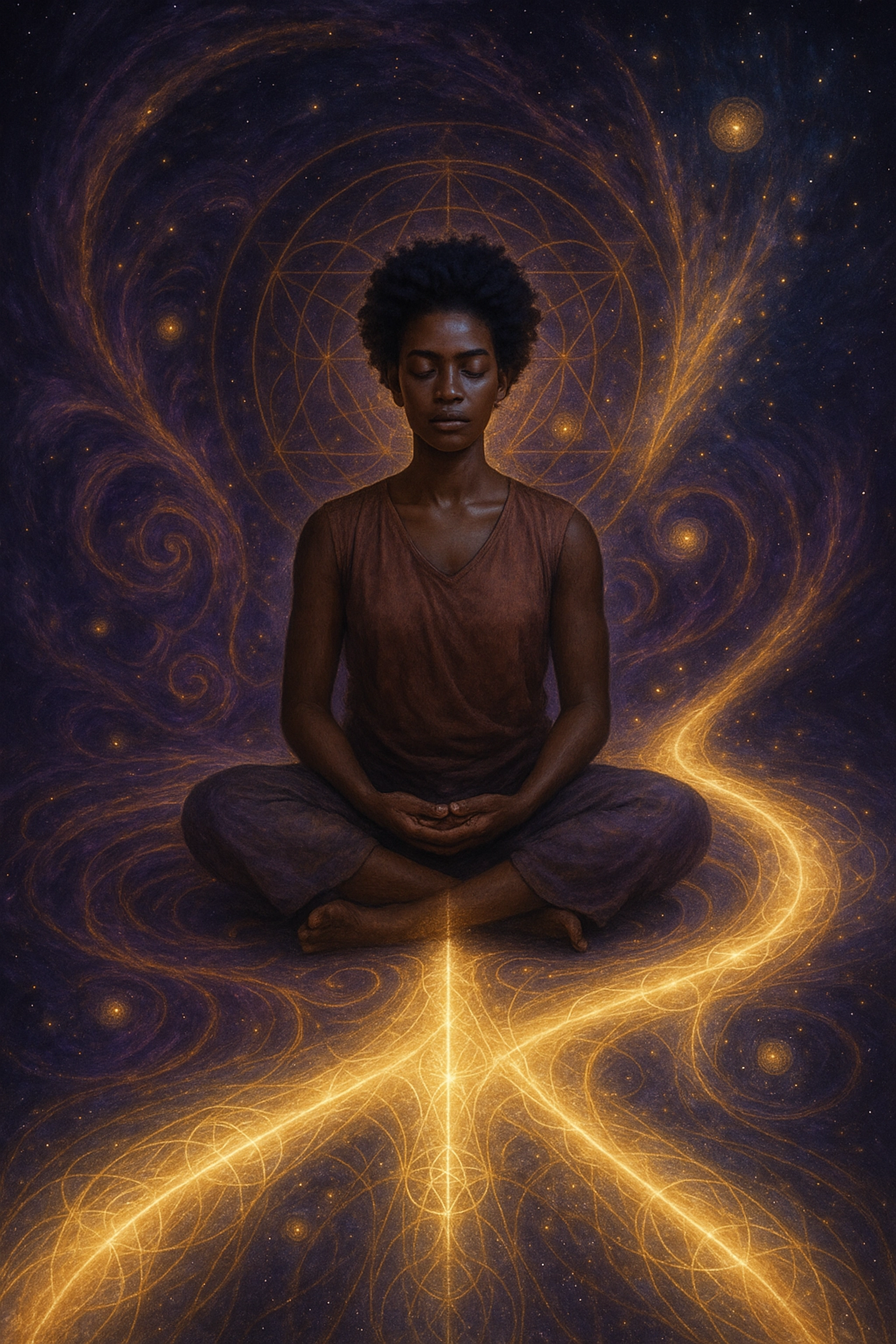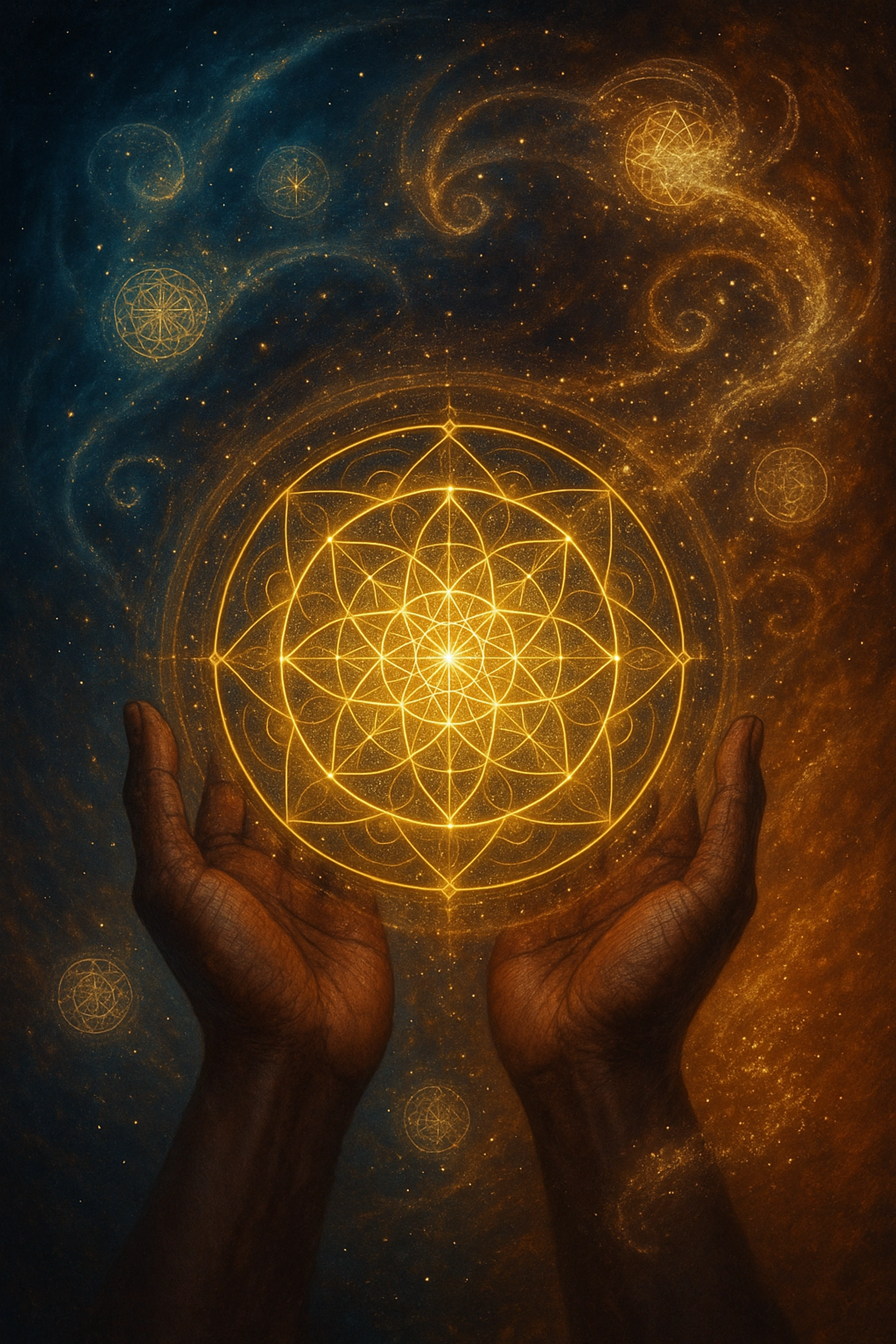Overwhelm isn't just a modern epidemic: it's a spiritual crisis. When your energy scatters in a thousand directions, when every decision feels monumental, when the weight of endless possibilities crushes your capacity for clear action, you've entered a sacred threshold. This is where ancient wisdom meets contemporary necessity.
The most successful spiritual practitioners and wellness leaders don't avoid overwhelm: they transform it. They understand that chaos often precedes clarity, that the very feeling of being pulled apart can become the catalyst for powerful integration.
What separates those who thrive from those who remain trapped in cycles of indecision isn't talent or luck. It's framework. It's having a proven system that honors both the practical demands of your calling and the deeper wisdom of your spirit.
The Sacred Architecture of Direction

Before we dive into the framework, let's acknowledge what's really happening when overwhelm takes hold. You're not failing. You're not weak. You're experiencing what happens when your soul's expansion outpaces your systems.
Every spiritual teacher, every healer, every person called to serve others encounters this threshold. The question isn't whether you'll face overwhelm: it's whether you'll have the tools to alchemize it into clarity.
The framework that follows isn't theoretical. It's been tested in the crucible of real practice, refined through the experience of countless practitioners who've learned to navigate the delicate balance between spiritual depth and practical effectiveness.
Step One: Sacred Pause and Divine Planning
The first step requires what our ancestors understood as the power of the pause: a conscious interruption of reactive patterns to create space for divine clarity. This isn't procrastination disguised as spirituality. This is strategic withdrawal that allows your deeper wisdom to surface.
When overwhelm hits, your nervous system activates fight-or-flight responses that cloud judgment and fragment focus. The sacred pause creates what traditional practices call the witness state: a place of centered observation from which clear planning becomes possible.
Begin with the Breath of Clarity
Take seven conscious breaths. Not as a quick fix, but as a deliberate practice of reclaiming your sovereignty over reactive patterns. Each inhale draws in spaciousness; each exhale releases the urgency that clouds discernment.
The Divine Inventory Process
Once centered, conduct what I call a Divine Inventory: a comprehensive assessment of everything demanding your attention. Write it all down. Every task, every commitment, every nagging thought that contributes to the overwhelm. This external brain dump serves two purposes: it clears mental clutter and creates objective distance from emotional charge.
Now comes the spiritual discernment: What serves your highest purpose? What aligns with your authentic calling? What reflects your values rather than your fears?
Use these sacred questions to guide your prioritization:
- What are the true consequences if this isn't completed?
- How does this task serve my deeper mission?
- Am I responding to genuine need or manufactured urgency?
- Where can I eliminate, delegate, or simplify?
The Urgent/Sacred Matrix
Adapt the traditional urgent/important matrix through a spiritual lens. Create four categories:
- Urgent and Sacred (immediate attention required for your highest calling)
- Sacred but Not Urgent (important work that builds your foundation)
- Urgent but Not Sacred (tasks that feel pressing but don't serve your mission)
- Neither Urgent nor Sacred (distractions masquerading as obligations)
Focus your energy on the first two categories. Question everything in the third. Release what belongs in the fourth.
Step Two: Aligned Action from Centered Being

Planning without action is spiritual bypassing. Action without planning is spiritual chaos. The second step bridges the gap between clarity and manifestation through what ancient traditions called right action: movement that flows from centered being rather than frantic doing.
This step requires courage. Not the courage of reckless motion, but the courage of aligned commitment. You'll face resistance: internal voices that question your choices, external pressures that demand different priorities, the familiar comfort of overwhelm itself.
The Three Pillars of Aligned Action
Presence Over Productivity: Each action flows from conscious presence rather than anxious doing. Before beginning any task, take a moment to center yourself in purpose. Ask: "How can I bring my fullest presence to this work?"
Quality Over Quantity: Choose fewer tasks and execute them with excellence rather than rushing through many with scattered attention. This honors both the practical need for effectiveness and the spiritual principle of devotion to craft.
Flow Over Force: Move at the rhythm of natural cycles rather than artificial urgency. Some seasons call for intense action; others require patience and preparation. Align your efforts with your authentic energy patterns, not external demands.
The Daily Direction Practice
Each morning, before checking messages or engaging with others' agendas, spend fifteen minutes in dialogue with your deeper wisdom. Review your Sacred/Urgent priorities. Choose no more than three primary focuses for the day. Set clear intentions for how you want to show up for each.
This isn't time management: it's energy stewardship. You're consciously directing your life force toward what matters most rather than letting it leak into reactive patterns.
Step Three: Sacred Completion and Integration

The third step addresses what derails most people: the gap between starting and finishing. In spiritual practice, we call this the space between initiation and integration: where transformation either solidifies or dissolves.
Completion isn't just about crossing items off lists. It's about honoring the full cycle of creation: inception, development, manifestation, and integration. Each completed action becomes medicine for overwhelm because it proves your capacity to move from chaos to clarity to concrete results.
The Completion Ceremony
Transform task completion into a spiritual practice. Before closing any project or task, pause to acknowledge:
- What you've learned through the process
- How the work has served your larger purpose
- What you're grateful for in the experience
- How this completion creates space for new possibilities
This integration process prevents the unconscious accumulation of unfinished energy that contributes to chronic overwhelm.
The Sacred Review
At the end of each week, conduct a Sacred Review. Not to judge your performance, but to witness your growth and refine your approach:
- Which actions felt most aligned with your authentic purpose?
- Where did you notice resistance, and what might it be teaching you?
- How did completion in one area create expansion in others?
- What patterns are you ready to release or strengthen?
Breaking the Overwhelm-Addiction Cycle
Here's what most people don't understand: overwhelm can become addictive. The constant crisis provides a sense of importance, the scattered busyness creates the illusion of progress, and the familiar chaos becomes more comfortable than the unknown territory of clear direction.
Recovery from overwhelm-addiction requires honest acknowledgment of these patterns and conscious commitment to a different way of being. It means choosing the sometimes uncomfortable clarity of focused action over the dramatic familiarity of constant crisis.
The Integration Challenge
As you implement this framework, you'll encounter internal resistance. Parts of you may rebel against the spaciousness that clarity creates. Expect this. Honor it. Don't let it derail your commitment to a more sustainable way of being.
The path from chronic overwhelm to clear direction isn't a destination: it's a practice. Each time you choose pause over reaction, planning over panic, aligned action over scattered doing, and completion over perpetual starting, you strengthen your capacity for centered leadership in your own life.
Your Sacred Commitment

This framework works, but only with consistent application. Knowledge without practice is spiritual entertainment. Practice without commitment is spiritual tourism.
Choose now: Will you remain in the familiar territory of overwhelm, or will you commit to the sometimes uncomfortable growth that clear direction requires?
Your work in the world: whether it's healing, teaching, creating, or serving: depends on your capacity to move from scattered to centered, from overwhelmed to aligned.
The framework is simple: Pause and Plan. Act from Alignment. Complete with Ceremony. The application is where your spiritual maturity reveals itself.
Remember: every moment of overwhelm is an invitation to practice. Every choice to pause rather than panic is a small victory. Every completed action is evidence of your growing capacity to transform chaos into clarity.
Your overwhelm isn't your enemy: it's your teacher, pointing toward the parts of your life that are ready for sacred reorganization. Trust the process. Honor the practice. Allow the framework to serve your deeper calling.
The world needs what you're here to offer, but it needs you to offer it from a place of clear direction rather than scattered urgency. This is how spiritual practice becomes practical wisdom. This is how overwhelm transforms into opportunity.

